I am trying to display percentages in ggplot2 using geom_line and geom_point. My code is:
print(ggplot(data=dfComb, aes(x=hour_adj, y=(..count..)/sum(..count..), group=word)) +
geom_line(aes(colour=dfComb$word)) +
geom_point(aes(colour=dfComb$word))
+ ggtitle(paste("Hourly Frequencies of Tweets")) +
xlab("Hour of Day") +
ylab("Count") +
scale_colour_discrete("Word", breaks=c("A","B"), labels=c("yid", "abbo")) +
scale_y_continuous(labels = scales::percent)
)
This errors:
Error in FUN(X[[i]], ...) : object 'count' not found
because the ..count.. variable is only created by geom_histogram (I think!) and not geom_line. Is there an easy way to use percentages with geom_line?
FYI: EDIT, my data is:
dput(dfComb)
structure(list(hour_adj = c(0L, 1L, 2L, 3L, 4L, 5L, 6L, 7L, 8L,
9L, 10L, 11L, 12L, 13L, 14L, 15L, 16L, 17L, 18L, 19L, 20L, 21L,
22L, 23L, 0L, 1L, 2L, 3L, 4L, 5L, 6L, 7L, 8L, 9L, 10L, 11L, 12L,
13L, 14L, 15L, 16L, 17L, 18L, 19L, 20L, 21L, 22L, 23L), count = c(44,
24, 22, 36, 26, 18, 39, 35, 50, 46, 46, 41, 57, 49, 34, 56, 54,
54, 49, 45, 36, 49, 43, 47, 35, 20, 18, 10, 10, 25, 25, 26, 32,
25, 29, 39, 37, 45, 52, 43, 46, 67, 38, 69, 108, 80, 73, 48),
word = structure(c(2L, 2L, 2L, 2L, 2L, 2L, 2L, 2L, 2L, 2L,
2L, 2L, 2L, 2L, 2L, 2L, 2L, 2L, 2L, 2L, 2L, 2L, 2L, 2L, 1L,
1L, 1L, 1L, 1L, 1L, 1L, 1L, 1L, 1L, 1L, 1L, 1L, 1L, 1L, 1L,
1L, 1L, 1L, 1L, 1L, 1L, 1L, 1L), .Label = c("A", "B"), class = "factor")), .Names = c("hour_adj",
"count", "word"), row.names = c(NA, -48L), class = "data.frame")
